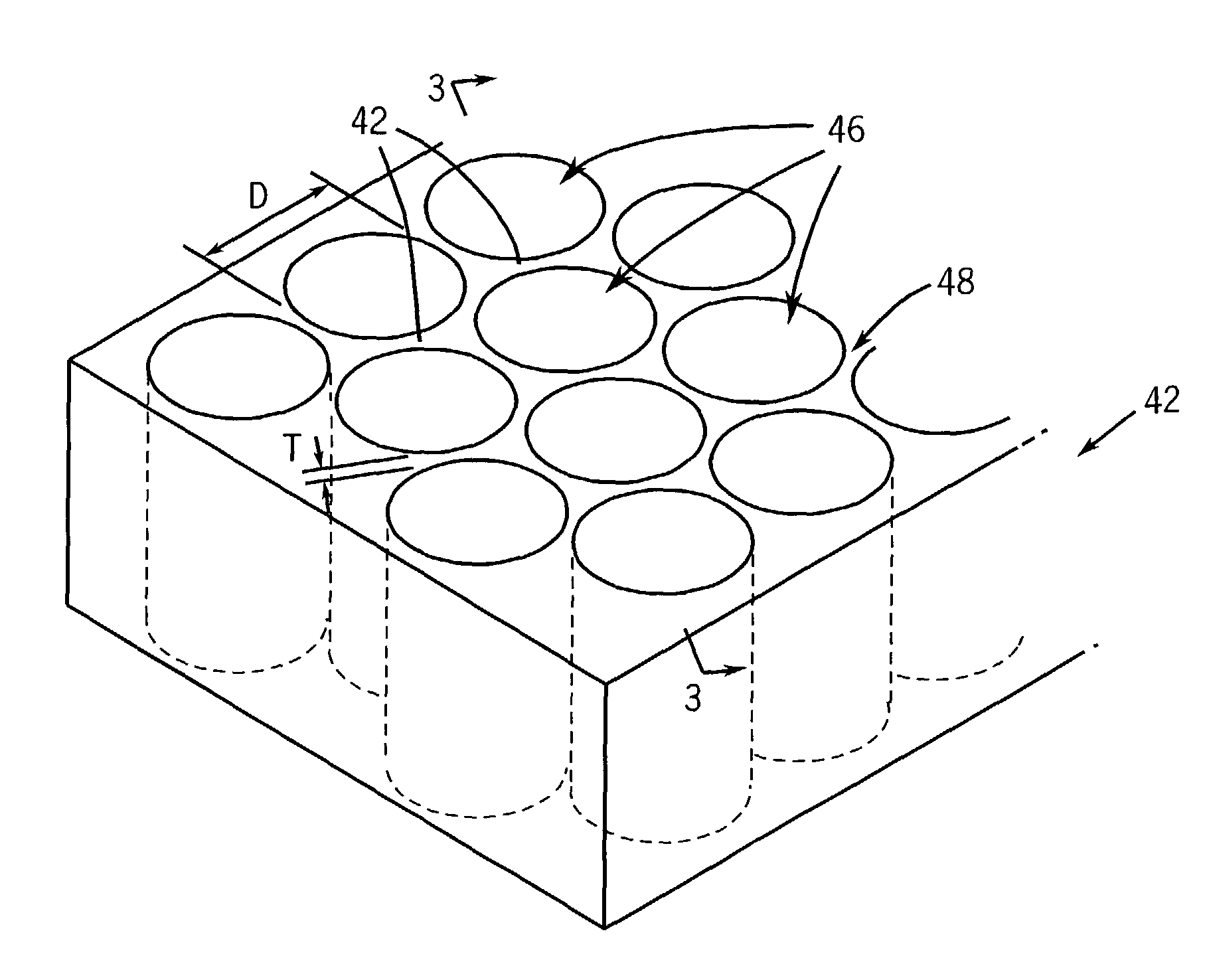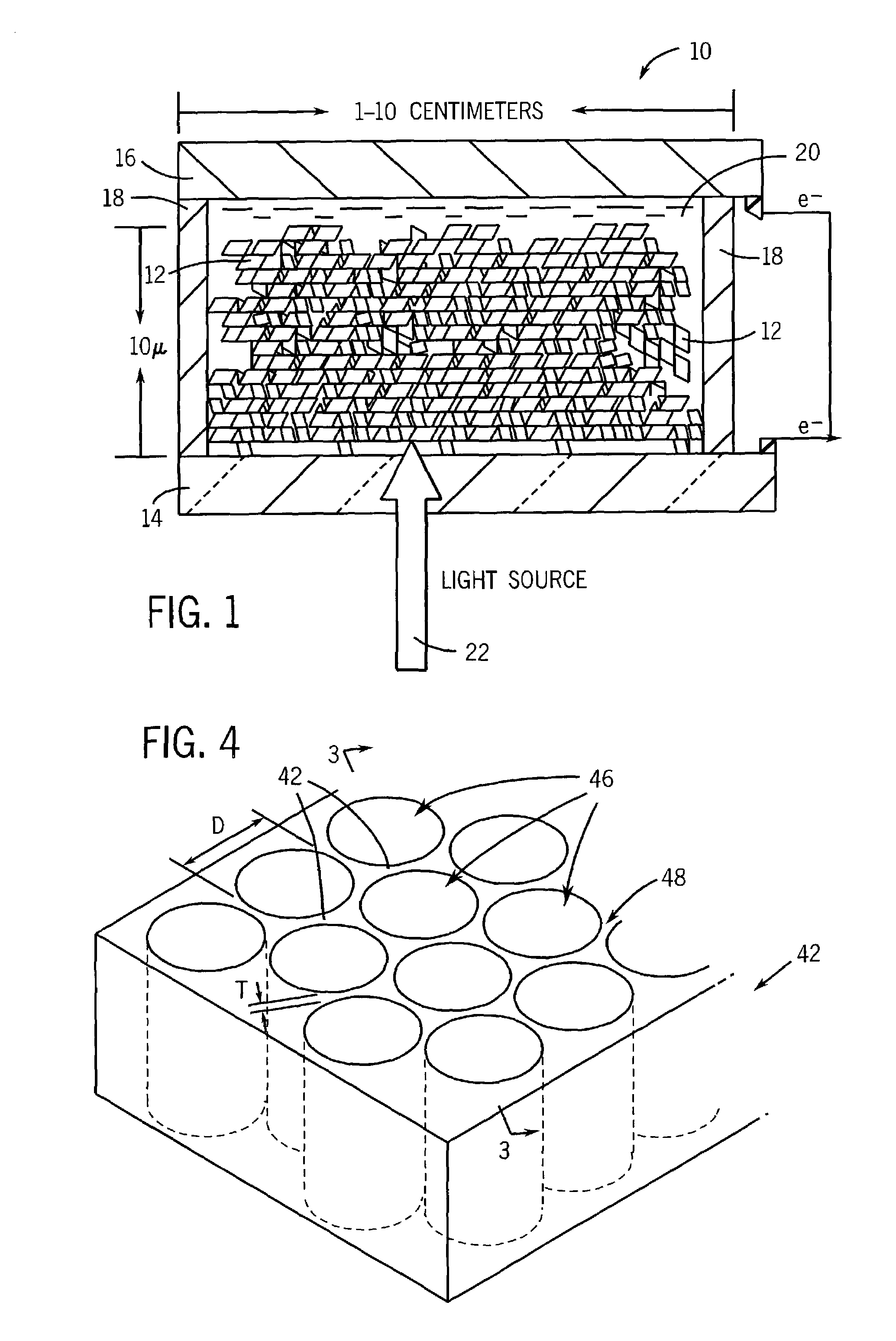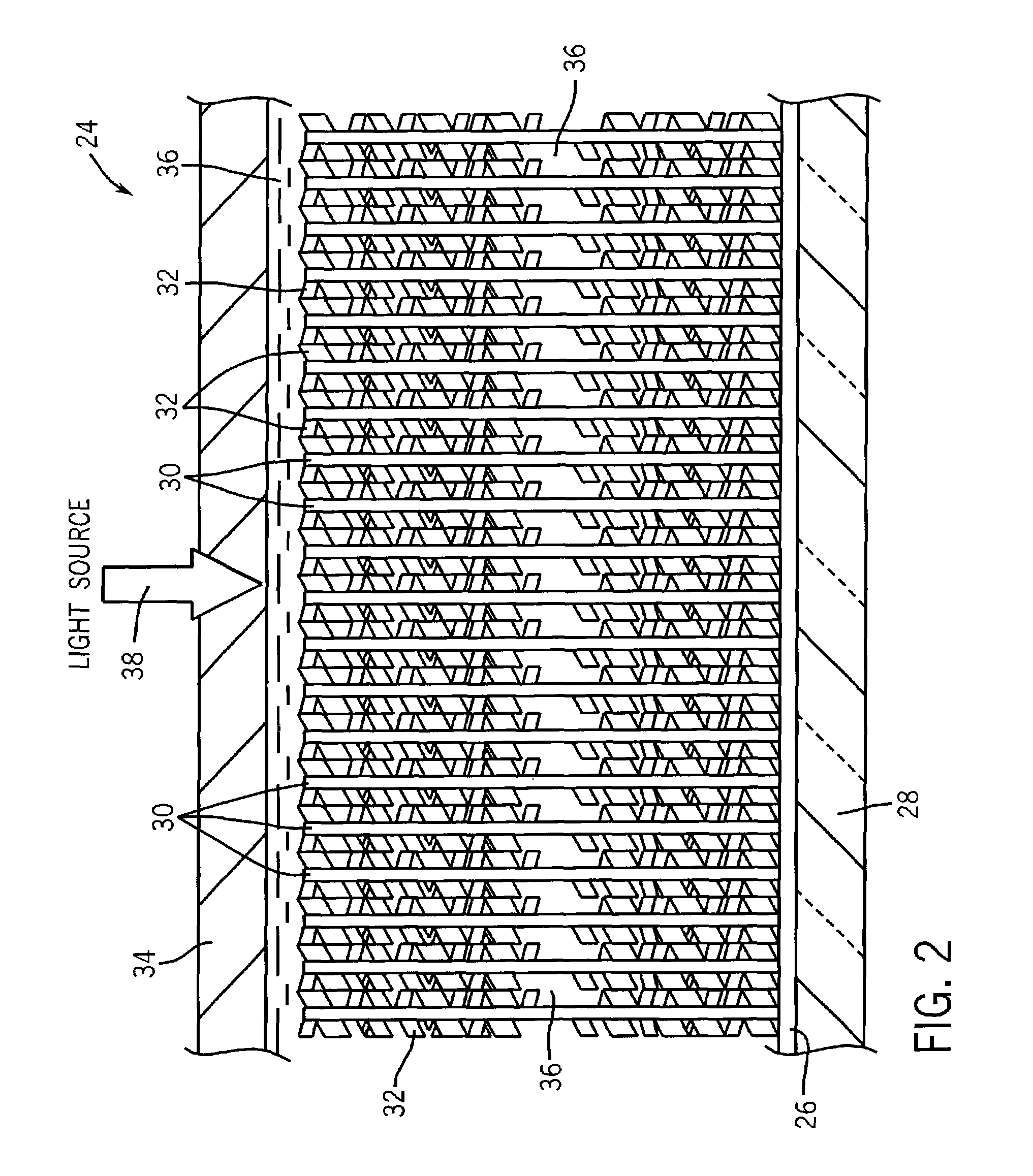Dye sensitized solar cells having foil electrodes
- Summary
- Abstract
- Description
- Claims
- Application Information
AI Technical Summary
Problems solved by technology
Method used
Image
Examples
Embodiment Construction
[0022]FIG. 1 illustrates an exemplary embodiment of a dye-sensitized solar cell 10. As can be appreciated, the solar cell 10 may be constructed by implementing planar layered structures. The solar cell 10 may be fabricated by implementing any one of a number of techniques and using a variety of materials, as can be appreciated by those skilled in the art. In one embodiment, a layer of semiconductor material, such as a layer of nanocrystalline titanium dioxide (TiO2) 12 may be disposed on a transparent substrate 14, such as a glass substrate. The substrate 14 is coated with a conductive layer such as a transparent conducting oxide (TCO) layer. The TCO coated transparent substrate 14 forms the front electrode of the solar cell 10. As can be appreciated, the substrate 14 may comprise other transparent materials such as plastic. The TiO2 layer 12 may be disposed at a thickness in the range of 5–20 microns, for example. The TiO2 layer 12 is generally disposed at a thickness of at least 1...
PUM
 Login to View More
Login to View More Abstract
Description
Claims
Application Information
 Login to View More
Login to View More - R&D Engineer
- R&D Manager
- IP Professional
- Industry Leading Data Capabilities
- Powerful AI technology
- Patent DNA Extraction
Browse by: Latest US Patents, China's latest patents, Technical Efficacy Thesaurus, Application Domain, Technology Topic, Popular Technical Reports.
© 2024 PatSnap. All rights reserved.Legal|Privacy policy|Modern Slavery Act Transparency Statement|Sitemap|About US| Contact US: help@patsnap.com










